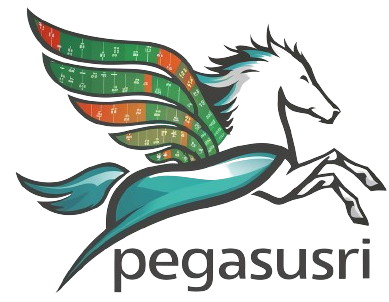Investing $1,000 may seem like a small amount, but it can be a significant step towards building long-term wealth and financial stability. By making smart investment choices and developing a solid financial plan, you can turn that initial $1,000 into a growing nest egg that will support your future goals and aspirations.
Why Investing $1,000 is Important
The Impact of Investing $1,000 on Financial Health
Investing even a modest sum of $1,000 can have a profound impact on your overall financial health. By putting your money to work in the market, you tap into the power of compound interest, allowing your wealth to grow exponentially over time. Starting early with a relatively small investment can make a big difference in the long run, setting you on the path to financial independence.
Moreover, the act of investing $1,000 demonstrates a commitment to your financial future. It shows that you are willing to prioritize your long-term goals and make sacrifices in the present to secure a better tomorrow. This mindset shift can have a ripple effect on other areas of your financial life, encouraging you to budget more effectively, save more diligently, and make smarter spending decisions.
Top Investment Strategies for $1,000
Diversification: Reducing Risk and Enhancing Returns
One of the key principles of successful investing is diversification. By spreading your $1,000 across various asset classes and sectors, you can mitigate risk and maximize potential returns. A well-diversified portfolio might include a mix of stocks, bonds, real estate, and commodities.
For example, you could allocate 60-75% of your $1,000 into a handful of carefully selected individual stocks representing different industries. These could include established blue-chip companies with a history of stable growth, as well as up-and-coming firms with innovative products or services. The remaining 20% or so could be invested in index funds that track broader market performance, providing exposure to hundreds of companies in one fell swoop.
High-Yield Savings Accounts
If you’re looking for a low-risk way to grow your $1,000, consider opening a high-yield savings account. Unlike traditional savings accounts, which often offer paltry interest rates, high-yield accounts can provide annual percentage yields (APYs) of around 5% or more.
The beauty of a high-yield savings account is that your money is very safe, with virtually no risk of loss, up to $250,000 per depositor per insured bank. Your $1,000 principal is guaranteed while still earning a solid return. This can be an excellent option for building an emergency fund or saving for short-term goals.
Some top high-yield savings accounts to consider include:
| Bank | APY | Minimum Balance |
|---|---|---|
| CIT Bank Savings Connect | 5.00% | $100 |
| Vio Bank High Yield Online Savings Account | 4.90% | $100 |
| UFB Direct Best Savings | 4.81% | $0 |
Source: Bankrate
Investing in Index Funds
For a hands-off approach to investing your $1,000, consider putting your money into index funds. Index funds are baskets of securities that track a particular market index, such as the S&P 500. When you invest in an index fund, you effectively own a small piece of each company in that index.
The advantages of index funds are many. They offer instant diversification, low fees, and solid long-term returns that often outperform actively managed funds. With just $1,000, you can gain exposure to hundreds or even thousands of stocks, spreading your risk while still enjoying the market’s overall growth.
Some popular index funds to consider include:
- Vanguard S&P 500 ETF (VOO)
- Fidelity ZERO Large Cap Index (FNILX)
- Schwab U.S. Broad Market ETF (SCHB)
Utilizing Robo-Advisors
Another option for investing your $1,000 is to use a robo-advisor. Robo-advisors are digital platforms that use algorithms to build and manage investment portfolios based on your goals, risk tolerance, and timeline.
With a robo-advisor, you simply answer a series of questions about your financial situation and objectives. The platform then recommends a diversified portfolio of low-cost index funds or ETFs tailored to your needs. You can set up automatic contributions, and the robo-advisor will handle the ongoing management and rebalancing of your investments.
Some top robo-advisors include:
- Betterment
- Wealthfront
- Charles Schwab Intelligent Portfolios
Robo-advisors typically have very low minimum investment requirements, making them accessible for those starting with just $1,000. Fees are also generally lower than what you’d pay for a traditional financial advisor.
Building a Strong Financial Foundation
Establishing an Emergency Fund
Before you start investing your $1,000, it’s crucial to have a solid financial foundation in place. One key component of this is an emergency fund – a readily accessible savings account with enough money to cover 3-6 months’ worth of living expenses.
Having an emergency fund provides a critical safety net in case of job loss, medical bills, or other unexpected costs. Without this buffer, you may be forced to tap into your investments prematurely, potentially incurring losses or taxes and undermining your long-term financial goals.
If you don’t yet have a fully funded emergency account, consider directing a portion of your $1,000 towards this purpose first. You’ll sleep easier knowing you have a cushion, and you can invest the rest with greater confidence.
Paying Off High-Interest Debt
Another important step before investing is to pay off any high-interest debt, such as credit card balances. With average credit card rates hovering around 20%, it’s hard for investment returns to outpace the interest you’re paying on revolving debt.
If you have $1,000 to work with, it may be wise to use some of that money to chip away at your credit card balances. You could also consider strategies like transferring your balances to a card with a 0% introductory APR, which would allow you to pay down your debt interest-free for a set period.
By eliminating high-interest debt, you free up more cash flow to direct towards investing each month. You also improve your credit score, which can have positive ripple effects on your overall financial health.
Planning for the Future
Contributing to Retirement Plans
As you think about how to invest your $1,000, don’t overlook the power of retirement accounts. Depending on your employment situation, you may have access to a 401(k) or similar plan at work. If not, you can open an individual retirement account (IRA) on your own.
Both 401(k)s and IRAs offer tax advantages that can supercharge your investment growth over time. With a traditional 401(k) or IRA, your contributions are made pre-tax, reducing your current taxable income. Your money then grows tax-deferred until you withdraw it in retirement.
Roth 401(k)s and Roth IRAs, on the other hand, are funded with after-tax dollars. While you don’t get an upfront tax break, your money grows tax-free, and you can withdraw it tax-free in retirement.
For 2023, you can contribute up to $6,500 to an IRA ($7,500 if you’re 50 or older). For 401(k)s, the limit is much higher at $22,500 ($30,000 if you’re 50+). Even if you can only put a portion of your $1,000 into a retirement account, it’s a smart move for your future.
Setting Clear Financial Goals
As you embark on investing your $1,000, it’s important to have clear financial goals in mind. What are you hoping to achieve with this money? Are you saving for a down payment on a house, funding a child’s education, or building a nest egg for retirement?
Your goals will dictate your investment strategy, including your asset allocation and time horizon. For example, if you’re saving for a short-term goal like a vacation, you may want to keep your $1,000 in a safe, easily accessible vehicle like a high-yield savings account. For longer-term goals like retirement, you can afford to take on more risk in exchange for potentially higher returns.
It’s also important to regularly review and adjust your investment plan as your goals evolve. As you reach milestones or your financial situation changes, you may need to rebalance your portfolio or shift your strategy. By staying engaged with your investments and keeping your eyes on the prize, you’ll be better positioned to turn that $1,000 into lasting wealth.
Exploring Alternative Investment Options
Starting a Small Business Venture
For those with an entrepreneurial spirit, investing $1,000 in a small business venture could be a path to building wealth. While starting a business involves more risk than traditional investing, it also offers the potential for outsize returns.
There are countless business ideas you could pursue with $1,000, from launching an e-commerce store to offering freelance services in your area of expertise. The key is to identify a market need, develop a unique value proposition, and create a lean startup plan to maximize your limited resources.
Of course, starting a business isn’t for everyone. It requires hard work, persistence, and a willingness to learn from failure. But for those with the drive and vision, investing in yourself and your ideas can be a powerful wealth-building strategy.
Exploring Peer-to-Peer Lending Platforms
Another alternative way to invest your $1,000 is through peer-to-peer (P2P) lending platforms. P2P lending allows individuals to borrow and lend money without going through a traditional bank.
As an investor on a P2P platform, you can browse loan listings and choose which ones to fund based on the borrower’s credit profile, loan purpose, and interest rate. You earn money from the interest paid on the loans you fund.
P2P lending can offer higher returns than traditional fixed-income investments, with average annual returns ranging from 5-10%. However, it also carries more risk, as borrowers may default on their loans. To mitigate this risk, most P2P investors spread their money across many different loans.
Some popular P2P lending platforms include:
- LendingClub
- Prosper
- Funding Circle
As with any investment, be sure to do your due diligence and understand the risks before committing your $1,000 to P2P lending.
Enhancing Financial Literacy
Seeking Financial Advice
Investing $1,000 is a great start, but it’s just one piece of the larger financial puzzle. To truly build long-term wealth, it’s important to enhance your overall financial literacy and develop a comprehensive financial plan.
One way to do this is by seeking out professional financial advice. A qualified financial advisor can help you assess your current situation, set realistic goals, and develop a roadmap to achieve them. They can also provide guidance on complex topics like taxes, estate planning, and insurance.
When choosing a financial advisor, look for someone who is a fiduciary, meaning they are legally obligated to act in your best interests. You should also consider their qualifications, experience, and fee structure to ensure they are a good fit for your needs.
Engaging with the Community
Another way to boost your financial literacy is by engaging with the larger personal finance community. There are many online forums, blogs, and social media groups dedicated to discussing investing, budgeting, and wealth-building strategies.
By participating in these communities, you can learn from the experiences of others, ask questions, and get feedback on your own financial plans. You may also discover new investment opportunities or strategies that you hadn’t considered before.
Some popular personal finance communities include:
- Reddit’s r/personalfinance
- Bogleheads Forum
- BiggerPockets (for real estate investing)
Of course, it’s important to remember that not all advice on the internet is good advice. Always do your own research and consult with a professional before making any major financial decisions.
Investing $1,000 may feel like a small step, but it can be the start of a lifelong journey towards financial freedom. By understanding your options, developing a thoughtful strategy, and staying committed to your goals, you can turn that initial investment into something much greater. Whether you choose to invest in stocks, bonds, real estate, or your own business venture, the most important thing is to get started and keep learning along the way.
See also:
- Where to Invest $1000 Right Now: Top Strategies for 2024
- What Should I Invest in Right Now? Top Opportunities for 2024
- How to Invest 1 Million Dollars: Top Strategies for Success
- How to Invest 10k: Top Strategies for Smart Investing
- How to Invest $1 Million Dollars for Monthly Income: Top Strategies






